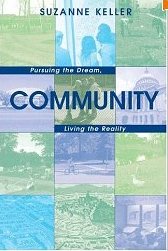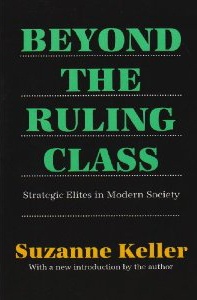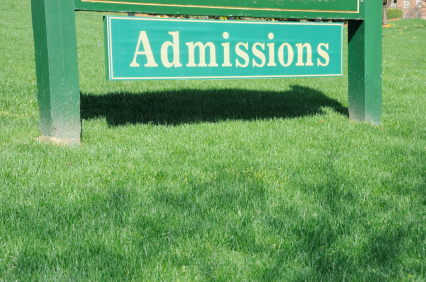College Admissions
College Admissions
Preparing for College
The Best College for You
What to Study
Applications
Education Options
Education Options
Private Universities
Public & State Universities
Community Colleges
Scholarships
Scholarships
African American Scholarships
Latino Scholarships
Native American Scholarships
Women Scholarships
College Grants
College Grants
Federal Grants
Merit Based Grants
Need Based Grants
Student Loans
Student Loans
Federal Student Loans
State Student Loans
No Co-signer Student Loans
Bad Credit Loans
Student Loan Consolidation
College Survival
College Survival
Financial Aid Tips
The Digital Student Blog
There is so much wrong with college athletics that it can be difficult to focus on any one issue. But it is easy to see that those in charge have time and time again sold their souls.
So it is not surprising that the recent BCS Championship game took place on January 10th, a full 37 days after the completion of the college football season. Playing the game at such a late date is a function only of the dollars created – it is certainly not done with any consideration of the young men playing the game, the ones that the National Collegiate Athletic Association wants us to call student athletes.
 Instead, there ought to be another term, something along the line of “scholarship athletes.” Because, quite frankly there is very little about big time, male college sports that is about students.
Instead, there ought to be another term, something along the line of “scholarship athletes.” Because, quite frankly there is very little about big time, male college sports that is about students.
But I cannot find fault with the athletes themselves, so young and easily led that the vast majority actually think that if the cards fall right, they will one day make it to the NFL or the NBA. No, the fault lies with the adults and the guidelines set forth by the NCAA, an organization that has earned its blogosphere nickname, the “No Credibility Athletic Association.”
Yes, there is so much wrong that I am seldom surprised when I see yet another example of hypocrisy. But it did happen this past week when I had the good fortune to read a recent Gregg Doyel column at CBSSports.com.
The situation involves Rob Bolden, a freshman quarterback at Penn State who became the first true freshman QB in nearly a century to start a game for the storied Nittany Lions. To get the full detail, you can head over to Doyel’s column but it is yet another tale of how college athletics makes so little sense.
In a nutshell, after a concussion during the seventh game of the season, Bolden found himself on the bench. As the season worked its way towards its January conclusion, it became apparent to Bolden that he was not destined to get off the bench.
Accordingly, the youngster asked for a release from his scholarship so that he could transfer to another school. But in a sign of just how wrong the entire college-athletics process is, the coaching staff at Penn State can actually veto such a request.
And according to Doyel, the staff did say no.
The result? Without Penn State signing off, Bolden’s only scholarship for 2011-2012 can come from Penn State. Even though many other schools would happily grant him one (he was offered scholarships at multiple schools initially), they cannot without the release. Therefore, to transfer, Bolden must find the money to pay his own way into another college. In a nutshell, under current NCAA rules this young man is the property of the Penn State football program.
To show the blatant hypocrisy, Doyel goes on to remind us of the situation involving the recent signing of former University of Connecticut coach Randy Edsall by the Maryland Terrapins. According to Doyel, Edsall was in talks with the Maryland administration about his new job even as he was first preparing and then actually coaching his team in the biggest bowl game in UConn history. Not only had Edsall apparently agreed to a deal, instead of returning home on the plane with his team flew instead to Maryland where he accepted the new coaching position.
So here again is why people call the NCAA the “No Credibility Athletic Association.”
Edsall “got an enormous raise and can coach at Maryland right away in 2011,” notes Doyel. “But if Rob Bolden transfers to Maryland, he’d have to sit out the 2011 season — and pay his own way as a student.”
Is it not any wonder that we have people actually stating that it is time to pay college athletes. That suggestion belongs right up there with the idea that colleges should construct majors so that these individuals can actually major in football or basketball.
Yes, there is so much wrong with college athletics it is difficult to know where to start. But seemingly every day we hear tell of another tale where the only thing that matters is money and yet another situation where the word student is simply removed from the term student-athlete.
Perhaps you saw the NACE Job Outlook 2011 featuring the list of the top majors for the Class of 2011. But for students who struggle with mathematics and the hard sciences, the list of four-year degrees featuring accounting, finance, electrical and mechanical engineering and computer science was no doubt overwhelming.
But looking deeper, two critical elements of that report should give young people heart. First, NACE is characterizing the job market for 2011 graduates as “good,” a full shelf above last year’s “fair” rating.
Perhaps more importantly for students, when it comes to job growth opportunities moving forward, there are a number of fast-growing career fields that allow entry into the workforce with no more than a certificate or an associate’s degree. Here are ten fields that are expected to grow significantly over the next five years.
1. Gaming Book Writers and Runners
 The growth of the regulated gambling industry is providing a whole new field of work where the only required education tends to be a high school diploma. That said, students who have taken basic business courses and received customer service training will have the best chance of securing jobs in the industry.
The growth of the regulated gambling industry is providing a whole new field of work where the only required education tends to be a high school diploma. That said, students who have taken basic business courses and received customer service training will have the best chance of securing jobs in the industry.
The industry still employs only a small number of individuals and work is confined to those regions where facilities have been or are about to be built. But growth expectations stand at 28% over the next five years with median pay at just a shade under $21,000 a year ($400+ week).
2. Gaming Surveillance Officers
As states struggle with revenues, there will continue to be cutbacks in public law enforcement personnel. Those cutbacks mean that firms with a need for onsite security will be hiring private security personnel.
The aforementioned gaming industry is one such business that will require onsite personnel. To enter this field students generally need only earn a basic certificate from a local community college.
Specific industry training is then conducted. With median pay topping $30,000 a year, this field offers a unique career option that would also include high tech video surveillance to check on any cheaters, either those gambling or even employees of the firm.
3. Pharmacy Technicians
As the health care profession continues to look towards greater efficiencies, one area where the work is likely to shift is within the delivery of prescription medications. Pharmacy technicians are expected to assume many of the clerical duties currently handled by licensed pharmacists.
Formal programs are available at local community colleges, vocational schools, hospitals, and through the military. Ranging from 6 months to 2 years and including classroom and laboratory work, these programs cover medical and pharmaceutical terminology, proper record keeping, and pharmacy law and ethics. Most of these training programs include internships, in which students gain hands-on experience in actual pharmacies.
Expectations have job growth at more than 30% through 2016 with median pay for 2006 at $26,510 ($12 – $13.00 per hour).
4. Dental Assistants
Offering median pay of nearly $600 weekly ($30,000+ a year), the dental assistant field is expected to grow by nearly 30% over the next five years. Once upon a time, students could enter the field directly after high school and receive on the job training.
Today however, students are expected to complete a one- or two-year certificate or a diploma program first. As with all programs, greater employment options are available for those completing the longer-term certificate option.
5. Dental Hygienists
If the dental field is of interest, students may want to consider the higher paying dental hygienist option. Also expected to grow by more than 30%, the dental hygienist field offers a chance for higher pay in return for greater care responsibilities.
 In most states, dental hygienists must earn a degree from dental hygiene school and secure state license to practice. Most dental hygiene programs offer an associate’s degree, though some also offer a certificate option while others offer a bachelor’s degree. In return for that schooling, hygienists can expect to earn significantly more per hour than those serving simply as dental assistants.
In most states, dental hygienists must earn a degree from dental hygiene school and secure state license to practice. Most dental hygiene programs offer an associate’s degree, though some also offer a certificate option while others offer a bachelor’s degree. In return for that schooling, hygienists can expect to earn significantly more per hour than those serving simply as dental assistants.
6. Skin Care Specialists
Given a projected job growth of nearly 35%, the skin care specialist field represents one of the fastest growing sectors available. Some high schools currently offer skin care programs as part of their vocational schools but many candidates go on to a post-secondary vocational school to receive their training.
Median pay for 2006 approached $30,000 annually ($600 weekly) making this a potentially strong paying option for those interested. Currently, estheticians are the skin care specialists that can expect to see the most job growth.
7. Manicurists and Pedicurists
One shelf below in terms of pay we find manicurists and pedicurists. However, an expected growth rate of nearly 28% makes this an up and coming career option.
Current median wages top $400 per week for a position that does require certification. Personal appearance workers generally need to graduate from a state-licensed cosmetology school and then pass a license exam.
8. Medical Assistants
Openings in the medical assistant field will grow by more than a third over the next five years. The field also offers a median pay of $26,000 yearly ($500.00+ weekly) and will generally come with a decent benefit package that includes sick time, health insurance options, and participation in a retirement plan.
To gain entry to the field, students can enter either a one-year certificate or two-year associate’s degree program with the latter offering better options for both securing initial employment and greater pay. In addition to the initial training, medical assistants also receive on-the-job training specific to their responsibilities from their employer.
9. Veterinary Technologists and Technicians
In America, we love our pets and those animals are in need of care. As with the health care field, the veterinary field is in need of technicians to help support the work of the primary care giver, in this case the vet.
VTs can expect to earn $13.00 an hour in a field that will grow some 40% over the next five years. One method for entering the field is to complete a two-year associate’s degree veterinary technician program from an accredited community college. If you love animals, this field can give solid employment options.
10. Personal and Home Care Aides
 With more than 750,000 new openings expected over the next five years, the home care aide field will be one of the easiest to find initial employment. Most states require no formal training for these positions with median pay of $9.00 per hour.
With more than 750,000 new openings expected over the next five years, the home care aide field will be one of the easiest to find initial employment. Most states require no formal training for these positions with median pay of $9.00 per hour.
A high school diploma is generally the only requirement to be hired but employees will immediately receive formal, on-the-job training. PCAs focus on performing housekeeping and routine services for those individuals who need support to remain in their homes. Most often, these individuals work with the elderly or those patients who are well enough to leave the hospital but not yet able to care completely for themselves.
11. Home Health Aides
As with home care aides, the personal and home care aide field will also produce more than 750,000 new jobs over the next five years. It is also a field where only a high school diploma is required but students looking to enter the field will receive extensive on the job training and work towards earning various certifications.
With median pay of about $10.00 per hour, home health aides generally provide some medical support as well as personal care for patients. The key when entering the field is to do your homework. Full time employment at certain companies will carry additional benefits for workers including health insurance while other contractors will insist only on at will, hourly employees.
12. Physical Therapy Assistants
With growth rates at 32+% and median pay topping $40,000 yearly ($800+ weekly), a career as a physical therapy assistant represents one of those win-win career options: excellent pay along with the chance to help people.
PTAs must complete an accredited 2-year program featuring an academic study component along with hands-on clinical experience. After completing the program, a PTA generally must pass a licensing test to be accredited by the American Physical Therapy Association.
Our thanks to Boston.com for providing the data as part of their “The year 2016: The 30 fastest-growing jobs.”
The recent economic downturn has been tough for workers but those with an education and sought-after job skills have fared much better. Those without a degree were far more likely to be laid off during the recession or suffer through reduced pay and benefits.
But time and time again we have insisted that the emphasis on the traditional four-year bachelor degree is wrong, that students should consider all higher education options, especially the two-year and four-year programs at their local community colleges. These programs not only focus on skills as much as academics, the shorter duration two-year program gets graduates into the workforce much sooner while both two- and four-year options allow graduates to earn a degree at a much lower cost.
Those who doubt the viability of this option should take note of a recent analysis of employment data in the state of Florida by the Miami Herald. A review of that data by the newspaper revealed that community college graduates, on average, earn a higher starting salary than those who graduate from four-year institutions.
Surprising Results?
 This assertion has raised questioning eyebrows everywhere, but the paper’s analysis of 2009 Florida employment data determined that those who earned either an associate’s degree in science or a bachelor’s degree from a community college earned $47,708 in their first year of employment. In contrast, those who earned a bachelor’s degree from a private four-year college made an average of $44,558 and those with a bachelor’s from a public four-year institution $36,552.
This assertion has raised questioning eyebrows everywhere, but the paper’s analysis of 2009 Florida employment data determined that those who earned either an associate’s degree in science or a bachelor’s degree from a community college earned $47,708 in their first year of employment. In contrast, those who earned a bachelor’s degree from a private four-year college made an average of $44,558 and those with a bachelor’s from a public four-year institution $36,552.
The Herald surmises that these wage differentials are likely due to a greater focus on practical skills and technical training directly related to the world of work. While community colleges feature such a focus, the belief is that liberal arts colleges tend o tfocus more on pure academic knowledge. In making its determination, the Herald noted the massive difference between those who earned a two-year associate’s degree in the sciences ($47,708) versus those with a two-year in the arts ($31,836).
Of course, students must be careful, this data reveals a correlation, not necessarily a cause and effect. One reason that community college students might earn more at the outset is that these students are often non-traditional. They are not necessarily attending college directly after high school and are more likely to have already been in the workforce. Ultimately, these individuals often have a stronger resume when they do eventually complete their two- or four-year degrees and are likely worth more to businesses.
It is also important, however, for students to understand the complete picture. Published studies clearly indicate that over a worker’s lifetime, four-year graduates earn more in total wages. Furthermore, four-year graduates have a higher earning ceiling over time, especially those students who complete a four-year program then move on to earn a graduate degree.
The Herald reported similar findings for the Florida data. But the data clearly indicates that treating an associate’s degree as a substandard or meaningless level of education is inaccurate.
Great Bang for the Buck
Clearly, job-specific training courses for occupations in the legal field, early childhood education, or any one of a number of healthcare specialties can provide students the opportunity for a good job with solid pay and benefit packages.
Accumulating smaller levels of debt also mean that students can also be in a better position to pursue further academic options over time. The key is that neither an associate’s nor a bachelor’s degree has to be thought of as a terminal option. One can always go back and earn the additional credentials that can lead to additional promotions along with subsequent salary increases.
The Herald further reinforces the need for an education and additional skills. Individuals holding just a high school diploma averaged less than $21,000 per year in earnings.
And it also reinforces the notion that when it comes to certificate options, students can expect higher earnings by focusing on programs where training is longer than six months ($37,356 versus $39,108).
The summary data of Florida average starting salaries for recent graduates:
Community college associate in science – $47,708
Community college postsecondary credit certificate – $39,108
Community college associate in arts – $31,836
Community college bachelor’s degree – $47,080
State university bachelor’s degree – $36,552
Private university bachelor’s degree – $44,558
There is much more to work-study than just the monetary benefit.
College is first and foremost about earning that all-important degree. Successful students always remember why they are in school and structure their time according to the academic demands placed on them.
But a growing body of research reveals that working on campus while in college pays enormous dividends for students. Those benefits come not only in the form of some much-needed cash to help with the college bills, those opportunities provide students a breadth of experiences that help them better round out their college years.
Work-Study Options
 On-campus work-study programs provide students with part-time employment options during their college years. These programs come in two basic formats: Federal Work-Study and non-Federal Work-Study, often called Student Work Initiative programs.
On-campus work-study programs provide students with part-time employment options during their college years. These programs come in two basic formats: Federal Work-Study and non-Federal Work-Study, often called Student Work Initiative programs.
Federal Work-Study (FWS) is actually a form of financial aid that is awarded to students based upon demonstrated financial need. Therefore, to be awarded Federal Work Study students must first fill out the Free Application for Federal Student Aid (FAFSA) as well as any other financial aid documents required by their school.
Ultimately, to be awarded Federal Work Study a student must meet certain financial eligibility requirements. And to be considered for this option, students must also check “yes” on the FAFSA form where it specifically asks if you are interested in student employment. If you are eligible for Federal Work Study, your financial aid award letter will indicate as such.
While most students work from 10 to 15 hours a week, the amount of hours and thus the sum of money you will be allowed to earn cannot exceed the total amount noted in your total FWS award. It is also important for students to realize that qualifying for FWS will enable them access to specific job opportunities but that students will still need to interview for and secure the actual position (sometimes only a formality but for the best work options more than one qualified student will often be seeking a specific position).
Non-Federal Work-Study (non-FWS) or Student Work Initiative programs are not based on financial need. If you filled out the FAFSA only to learn you did not qualify for FWS, you can still inquire about student employment opportunities on-campus.
Though work options always will exist off-campus, on-campus work-study provides students two key advantages. First, transportation to and from work will never be an issue. Second, on-campus employers are far more accommodating regarding your need to place school first in your life. Therefore, they are more likely to provide you that much-needed flexibility when exams pile up.
And it is important to note that one of the best aspects of Non-Federal Work-Study or Student Work Initiative options is that there is no limit placed on earnings. Therefore, at times when other students are not interested in working you can pick up even more hours should you want to do so.
Benefits of On-Campus Employment
There is little doubt that most college students take a job for the financial benefits associated with it. For some, work is absolutely necessary to help them pay their related educational expenses. For others, employment provides some basic spending money for incidentals and for treating themselves to the occasional night out.
Though most students do work while in school, some believe that working during college serves as a distraction from what should be a student’s primary focus: their academics. But the 2008 National Survey of Student Engagement demonstrated that working while in school was positively associated to student engagement.
Similarly, it is now clear that the work-world can serve to enrich the college experience. Far from being a distraction for students, working during college has proven to be one of the places where students develop two critical employment and life-related skills: teamwork and time management.
 Even working in the school cafeteria can help students develop fundamental work habits. But securing employment with a specific department related to your field of study can provide students with the potential to deepen and enrich what they are learning in the classroom. Perhaps most importantly, working students find their on-campus work experiences help them clarify their career aspirations.
Even working in the school cafeteria can help students develop fundamental work habits. But securing employment with a specific department related to your field of study can provide students with the potential to deepen and enrich what they are learning in the classroom. Perhaps most importantly, working students find their on-campus work experiences help them clarify their career aspirations.
For all of these reasons, the idea of working while on campus is fundamental to the mission of such work colleges as the College of the Ozarks, Alice Lloyd and Berea. These colleges make work and service a fundamental of their educational philosophy.
Give Careful Consideration
Clearly, students can benefit significantly from working while in college. Everything from reducing the amount of money they borrow to rounding out the college experience makes working while in school often one of the most important aspects of the college years for all students.
Such experiences can of course be gained off campus also in the right setting and with the right employer. So those options are deserving of pursuit as well.
But students interested in work-study will generally find a wealth of options on campus where flexibility reigns and transportation is simply not an issue.
There are times when we are reminded of just how much society has changed over the last 100 years. The recent death of Sociologist Suzanne Keller represents just such a case.
Professor Keller holds the important distinction of being the first woman ever granted tenure at Princeton University. Though it is very hard to imagine, she was granted that status in 1968 after having begun her association with the school as a visiting professor just two years before.
We say hard to imagine because it does not seem possible that it would take until 1968 for Princeton to have a tenured women professor. But it shows just how far women have had to come to break the glass ceiling.
 And now, barely forty years later, four of the elite Ivy League schools, once the bastion of male dominance, currently feature female presidents.
And now, barely forty years later, four of the elite Ivy League schools, once the bastion of male dominance, currently feature female presidents.
Historical Perspective
Yes 1968 seems quite late considering the progress women had made since the turn of the century. First, Professor Keller’s appointment came nearly 50 years after the ratification of the 19th Amendment that prevented any citizen from being denied the right to vote based on that citizen’s sex (August 18, 1920).
It would also be a full 52 years after Jeannette Ranking of Montana became the first woman to serve in Congress (1917) and another 36 years after Hatie Wyatt Caraway became the first woman to ever be elected to the US Senate (1932). And it would be 32 years after Ruth Benedict became the first tenured woman at Columbia University in 1937.
But of course, Princeton remained all male until the late 1960s. It was not until 1961 that Sabra Follett Meservey, the first woman in the University’s history, would be enrolled as a full-time degree candidate. Meservey entered as a graduate degree student.
The first full-time undergraduate female students were admitted in 1963 when the Critical Languages Program (CLP) was introduced. A one year program offered during a student’s junior year, this program allowed students from other colleges to spend a year at Princeton studying Arabic, Chinese, Japanese, Persian, Russian, and Turkish languages and related regional studies. The first five women to attend the CLP program at Princeton were actually dubbed “Critters” by resident Princetonians.
It would not be until September of 1969 that the first freshman class would feature females. That year, 101 freshman and 70 transfer students joined the ranks of the Princeton student body. Four year’s later when the first graduating class of coeds left campus one young lady would be the school’s only Marshall scholarship winner that year while another would be one of the school’s three Fulbright recipients.
Importance of Women and Tenure
The much sought after tenure designation has been a critical choking point for women seeking advancement in higher education. It is the first, and most necessary step in a process that can one day lead to administrative leadership positions such as dean and of course, university president.
Tenure has always been a critical issue for all educators who seek to become full professors. It begins with the enormous demands placed on potential candidates to prove themselves early on in their teaching careers.
But the greatest issue is that the quest for tenure, once underway, puts faculty on a time clock. And that clock would never stop easily, most certainly not for pregnancies and the demands of balancing life with work for women.
 In retrospect, the appointment of Keller had to have been a relatively easy one for the school. The sociologist, known for her pioneering research topics on social stratification, community life and elites, authored what has been deemed one of the ground-breaking texts on elite life in America, “Beyond the Ruling Class: Strategic Elites in Modern Society,” published in 1963.
In retrospect, the appointment of Keller had to have been a relatively easy one for the school. The sociologist, known for her pioneering research topics on social stratification, community life and elites, authored what has been deemed one of the ground-breaking texts on elite life in America, “Beyond the Ruling Class: Strategic Elites in Modern Society,” published in 1963.
The native of Vienna, Austria, would later write “Community: Pursuing the Dream, Living the Reality,” regarding her research on middle class life and the need for people to have a sense of connectedness to a larger framework.
Special Place in Princeton History
Professor Keller moved to New York as a child and would later become an American citizen. She had an exemplary academic record completing her undergraduate degree at Hunter College, a master’s degree in social work from Rutgers and a Ph.D. in sociology from Columbia University.
But the respected researcher will always be known by her work at Princeton where she also played a major role in promoting women’s studies as an academic subject and taught the university’s first course on gender during the 1970s. That represented the first of the necessary steps towards the development of women’s studies as a formal program at the once all-male university.
Her place in Princeton history was recognized by Nancy Weiss Malkiel, Princeton’s dean of the college and a professor of history. Dean Malkiel offered the following appraisal of Professor Keller’s importance at Princeton:
“As the first woman appointed to a tenured professorship at Princeton, Suzanne Keller holds a unique position in the history of the university. As a remarkable scholar, teacher and mentor, and a wise and generous colleague, she holds a special place in the lives and hearts of generations of Princetonians.”
Last week we shared with readers the story of 23-year-old Kelli Space, her $200,000 plus in student loans, and her unique method of addressing her dire position. At last check, the young lady had secured donations totaling more than $7,500. Though still $192,500 more is needed, she has to be pleased with both the publicity her plight has drawn and the fact that she is making some progress.
This past week, Justin Cox revealed his effort to deal with his equally difficult position. He too has his own web site, StrummingAwayMyLoans, and has resorted to the loan challenge in what some might call a beggarly way.
“For the next year, I will play music in public at least once per week (in a subway, on a corner, in a coffee shop, wherever),” writes Cox. “I’ll keep a tip jar in front of me, and every single penny I make will be thrown in the direction of those loans. It will be both financially productive and artistically healthy.”
 While some might cast this street musician in a negative light, Cox’s philosophy on the issue is transcendent of the typical view. In fact, there is a lot of respect for someone who notes that there are options for those willing to search.
While some might cast this street musician in a negative light, Cox’s philosophy on the issue is transcendent of the typical view. In fact, there is a lot of respect for someone who notes that there are options for those willing to search.
“Whether it’s cooking, painting, jewelry making or working on your car, your debt can be the motivational catalyst that forces you to revive a dying passion or hone a natural talent,” states Cox. “It’s the ultimate, lemons-into-lemonade approach.”
It is nice to see someone digging deep, looking for any way to earn some additional funds to address their college debt. But street musician is a tough way to make a buck – instead of some $7,500 Cox reveals he took in 37 dollars in his first full month. Not exactly game changing when your loan payment is some $700 a month.
Other Unique Options
Young Mr. Cox and Ms. Space offer their unique approaches to what is a very tough situation. As for other unusual methods, the folks at CollegeScholarships offer some unique options as well.
Suggestion number 110 on their list represents just such an option:
We’re not endorsing prostitution, but if you can give some of yourself by donating blood plasma, you can net an extra couple hundred dollars a month.
Number 111 is similar.
Volunteer for a medical study. Most do not require much time and you get paid!
They do not suggest as much but we know of a young woman who has been giving thought of donating her eggs to a fertility clinic.
Yes, there are the ethical concerns associated with being a donor or being a guinea pig in a medical study, but then again we would suggest there are ethical concerns associated with virtually all of the aforementioned methods.
But if you took out those loans, then there are the ethics associated with meeting your loan payments.
Get Busy Taking Control
But it is suggestion numbers 112 and 113 at CollegeScholarships, two that mirror the philosophy of one Mr. Cox, that we like best.
Sell your expertise in a subject as a tutor, computer skills, music lessons.
We would add that while tutoring you counsel your charges to think twice about taking on gobs of debt.
Get a job in the food service industry. Chances are high that you can eat for free!
Yes, even if it is only to work part-time, flipping burgers could carry some much needed benefits.
Here we turn back to Mr. Cox and his philosophy:
“The goal is not fame and fortune; it’s art and, hopefully, a little bit of financial relief. I still get stressed by the fact that I’m staring down the barrel of decades of debt, but I take some very real comfort in the fact that I might strum a few of those years away.”
The bottom line is get busy – taking charge of your situation is the first step towards progress and ultimately feeling better about yourself.
We shared with readers earlier in the week the scathing report from The Education Trust called Subprime Opportunity: The Unfulfilled Promise of For-Profit Colleges and Universities. While just the latest in a long line of criticism about for-profits, the document proved to be the most scathing rebuke of the industry to date.
Over the week we have delved deeper into the report. One aspect we wanted to review further was an area that some have held up as a shining light for the for-profit industry. We are talking about the graduation rates at two-year and less than two-year schools.
 First and foremost, I agree to an extent with those who offer the mindset that attending college can be a win-win. After all, it is great to have one’s horizon’s expanded and it goes without saying that the knowledge gleaned can’t help but make a student a more productive citizen in the long run.
First and foremost, I agree to an extent with those who offer the mindset that attending college can be a win-win. After all, it is great to have one’s horizon’s expanded and it goes without saying that the knowledge gleaned can’t help but make a student a more productive citizen in the long run.
But at the same time, I am a firm believer that attending college becomes a win-win only if one earns that coveted sheepskin. After all, it is the diploma that generally provides students an opportunity to pursue better paying jobs that also carry with it those much-needed benefits.
In this single arena, the report does indicate that for-profit colleges are actually setting a pretty decent standard. According to the report, the graduation rate for associate degree programs or certificates at two-year for-profits is 60 percent. At the less than two-year for-profits, 66 percent earn a credential.
These percentages are based on completion of a program within the standard three-year time frame (as compared to six years to earn a bachelor’s degree). These completion rates are of course considerably higher than the 22-percent rate posted by community colleges.
One Big Problem
But the folks at Education Trust point out that this completion rate, while far better than the current rate of their public competitors, comes at a heavy price. The report clearly indicates that for-profits are leaving students with significant amounts of debt whether or not we are talking about bachelor’s degrees or associates.
First off, 19 percent of associate’s degree students and 3 percent of those completing a certificate at for-profits have debt loads greater than $30,000. That number is actually 25 percent more than the average debt incurred by all graduates of bachelor degree programs in America.
In contrast, only 2 percent of associate’s degree recipients and 1 percent of those students receiving a certificate at public institutions graduate with that level of debt.
But the real negative has to be the default rates of for-profit students. While college should lead to a path of higher earnings in the long run, it appears that students graduating from for-profits cannot earn enough money to pay back all the funds they have borrowed.
Sadly about 10 percent of for-profit students default on their federal loans within two years of entering repayment. Worse yet, the three-year rate of default nearly doubles to 19 percent.
These default rates are roughly twice the rates of students at public and private nonprofit colleges. In sum total, 43 percent of all federal student loan defaults come from students at for-profit schools. However, only 12 percent of college students attend for-profit schools.
Sum Total
At the bachelor’s level, for-profits have an abysmal graduation track record. At the associate and certificate level these institutions are producing better results than public community colleges.
But the high cost of programming leaves many significantly in debt. Most importantly, the high default rates reveal far too many students cannot overcome their debt burden.
Such a situation calls into question the actual value of the degree itself. It leaves us thinking that the sheepskin from these institutions is simply not worth the cost of attendance.
Let’s face it, when it comes to graduating students, colleges as a group are not getting the job done. With graduation rates trailing those of high schools by roughly 25 percentage points, there is little doubt that college dropouts are a huge issue.
But a new report from The Education Trust reveals that the for-profit college sector takes the 50 percent national college graduation rate to depths not seen before. It seems that the for-profit industry is graduating barely 20 percent of its students when using the standard statistical time frame of six years.
 Though for-profits spend far less to educate each individual student than public and private colleges, the average low-income student at a for-profit actually ends up paying almost $8,500 more per year than the average low-income student at the more expensive private nonprofit. The result is that these institutions, rolling in profits from strong marketing campaigns, appear to be doing very little for students with the exception of saddling them with enormous amounts of debt.
Though for-profits spend far less to educate each individual student than public and private colleges, the average low-income student at a for-profit actually ends up paying almost $8,500 more per year than the average low-income student at the more expensive private nonprofit. The result is that these institutions, rolling in profits from strong marketing campaigns, appear to be doing very little for students with the exception of saddling them with enormous amounts of debt.
This sad state of affairs is summarized in the Trust report as follows:
As with the collapse of the subprime lending industry, the showdown between for-profit colleges and the government shows how the aspirations of the underserved, when combined with lax regulation, make the rich, richer and the poor, poorer. For-profit colleges provide high cost degree programs that have little chance of leading to high-paying careers, and saddle the most vulnerable students with heavy debt. Instead of providing a solid pathway to the middle class, they pave a path into the subbasement of the American economy.
The report certainly clouds our thoughts as to whether or not one should still consider for-profit institutions when thinking of where to apply to school.
Some samples of graduation rates in the report:
University of Phoenix – 9%
DeVry University – 31%
The Art Institute – 41%
Berkeley College – 35%
Sullivan University – 15%
Westwood College – 27%
International Academy of Design and Technology – 16%
School of Visual Arts – 67%
The Illinois Institute of Art – 44%
ITT Technical Institute – 66%
Having borrowed $200,000, a graduate of Northeastern University resorts to begging for help online.
One college student is receiving a great deal of publicity for her unique way of dealing with her student loan debt. In a form that one could only describe as Internet begging, 23-year-old Kelli Space has created the web site Two Hundred Thou.
The home page displays this simple explanation:
I owe over $200,000 in student loans. Please donate to the cause: together we can make these loans disappear faster than you can ask why I went to such an expensive school!
Learning What Not To Do
 With current loan payments of $891 a month, Space provides us a powerful example of how naïve some college students are when it comes to borrowing for school. With payments on her federal loans set to nearly double by November of next year, the young lady now realizes her situation is hopeless unless she can find some extremely charitable souls.
With current loan payments of $891 a month, Space provides us a powerful example of how naïve some college students are when it comes to borrowing for school. With payments on her federal loans set to nearly double by November of next year, the young lady now realizes her situation is hopeless unless she can find some extremely charitable souls.
On her site she offers the simplest of explanations as to how she managed to incur $200k in debt?
Tuition and room + board for four years, along with 2 summer semesters, a 3-month stint abroad (as it is 1 of several options offered to fulfill Northeastern’s experiential education requirement), and books for approximately 3 semesters when I did not have a job at the onset. AND the interest that has accrued over the past 5 years (as interest accrues on private loans as soon as you take them out).
Space insists that she worked most of the time she attended school including her on campus work-study option. She also insists she did not receive any grants, just aid in the form of student loans. In spite of the costs of schooling and the lack of financial support, she also insists that she followed the advice of a financial advisor at the school “to explore other options” to help fund her Northeastern education “including private lenders.”
The Power of Compounding
Space provides us a great lesson in the power of compounding. On the site she reveals that her federal loans alone accrued more than $20,000 of interest during her time in school. So more than one-tenth of her debt is simply the interest on the original loans.
In addition, in her plea for help, Space also demonstrates the famous power of compounding. She notes that she would need one fairy tale donor, a very exceedingly generous soul, willing to cough up the full $200,000 to make her debt free.
 But she could make the issue far more manageable if she could find just 1,000 sympathetic visitors. It would take only a modest $200 donation from each of those individuals to put an end to her debt.
But she could make the issue far more manageable if she could find just 1,000 sympathetic visitors. It would take only a modest $200 donation from each of those individuals to put an end to her debt.
She also notes that just $5 per donor would be enough if she could find 40,000 sympathetic souls and just 67 cents per person if just one of every 1,000 Americans (300,000 out of more than 300 million people) felt enough kindness to help with the young lady’s plight.
The Debt Load
In our Student’s Guide to Finance we offer some basic ways for students to determine how your loans will affect you. We offer the advice of MSN Money professionals who insist that monthly loan repayments from school should not exceed 10% of your expected earnings.
Furthermore, to be safe in determining expected repayment, experts indicate that students should project an 8% interest rate return on the amount borrowed. Under such a scenario, every $1,000 you borrow costs roughly $12 a month to repay for a 10-year loan.
Therefore the average college student who leaves school with $24,000 in debt would face a monthly payment of about $288 per month. According to the MSN experts, to be safe you would need a monthly income of $2,900 to meet the 10% threshold, or a starting salary of about $35,000.
A person accruing $50,000 in student debt would face monthly payments of over $600 and thus require a monthly salary of $6,000 and yearly earnings of $72,000.
Can you predict what Kelli Space now faces?
One Naïve Young Lady
Our quick calculation reveals that $200,000 in student loans would normally yield a monthly bill of about $2,400 and thus require a yearly salary approaching $300,000.
Yes, this young lady would need a salary of $300,000 a year despite having earned only an undergraduate degree.
Such an amount would be viable only if one could claim a graduate degree in law or medicine but would still be a challenge even for them. Nowhere on the site could we find Ms. Space’s college major, so we cannot assess what would have been a realistic amount for her to borrow.
Instead, we can only shake our head in disbelief.
And acknowledge the young lady has now likely taken the only step that might allow her to correct this incredible mistake.
But begging for funds over the Internet is not a method we can recommend others contemplate. Instead, we suggest that students educate themselves on the damage that excessive borrowing can wreck on one’s future.
As the school year heads into its second quarter, high school seniors are now beginning the process of finalizing which schools they will apply to. One aspect of this process involves what may seem like a rather arbitrary decision but it is one that students should think carefully about.
We are talking about the choice as to how many schools to apply to.
Before presenting our recommendation as to how many, let us look at the current norm as published in the 2010 State of College Admission Report.
First off, the 2010 report reveals that seventy-five percent of those students who became college freshman in the fall of 2009 applied to three or more colleges. As for the heavy hitters, nearly one out of every four students (23 percent) submitted seven or more applications.
Clearly, applying to one or two colleges would place you in a distinct minority these days. But the suggestion that everyone is now applying to at least six to ten colleges is simply not accurate either.
 One good reason for limiting the total number of applications is the cost of filing one. According to the report, 90 percent of colleges had an application fee and the overall average was $39.
One good reason for limiting the total number of applications is the cost of filing one. According to the report, 90 percent of colleges had an application fee and the overall average was $39.
But larger institutions, as well as the more selective colleges, tended to have higher fees. However, 84 percent of those colleges that charged an application fee waived them for students with demonstrable financial need.
While applying to a number of schools can be expensive, the ease with which one can apply has grown exponentially. With a common application that can be filed online with the touch of a button, students may now easily apply to multiple schools.
Colleges Seek Your Application
It is important however for students to understand that colleges, in general, are actively seeking your application even if they are not actively seeking you as a potential student. In the college rankings game, it is important for schools to be able to publish data that seemingly demonstrates how sought after the school is by students.
The process works like this: a larger number of applicants is seen by outside agencies as a sign that a school is highly thought of by students. Likewise, a greater applicant pool allows a college to also sift through the many candidates to offer admission to those seen as the most worthy.
The result is that colleges can increase their selectivity rating and thus select a lower percentage of students for admittance. The increased number of applications combined with a lower percentage of acceptances works to improve a college’s ranking in those all important guides.
For that reason, colleges reach out to students for the purpose of drumming up interest in the school. Again, quoting the recent report, on average, colleges and universities spent about $524 just to recruit each applicant for Fall 2009 admission ($843 for each admitted student and $2,553 for each enrolled student). Ultimately, students need to understand that a good many people are working very hard to get an application from you.
The Number to Apply to?
While 23% percent of students currently apply to seven or more schools it is interesting to note that only 13% of students in 2000 applied to that many schools. One reason for the increase may be the concern that more students are attending college and therefore competition for openings is more of an issue.
But is also interesting to note that the acceptance rate for students in 2009 was 67%, nearly the same number (71 percent) as in 2001. That means that virtually every single applicant is accepted by at least one worthy college even if it is not the person’s first choice.
The result is that students are giving careful consideration as to where they will apply and even beginning to rethink the number as well. We read recently where there is a growing consensus that less could be more and the case of a very strong student coming up with a list of just five schools.
Those schools should include a good mix of reach, match and safety schools. And while some are still suggesting applying to between six and ten schools three reach, three match and two safety schools, we believe that identifying one or two reach schools at most, two match and two safety can give students a great deal of choice.
Five to six, maximum remains our recommendation. The key is to do your homework and determine the schools that are the best match for you.
Do not waste time applying to any school based simply on the notion that your peers are applying to eight or more. There is absolutely no sense in applying to a school that you are not 100% interested in attending no matter how easy it is to apply or how much one specific school seems to be reaching out with admissions info.